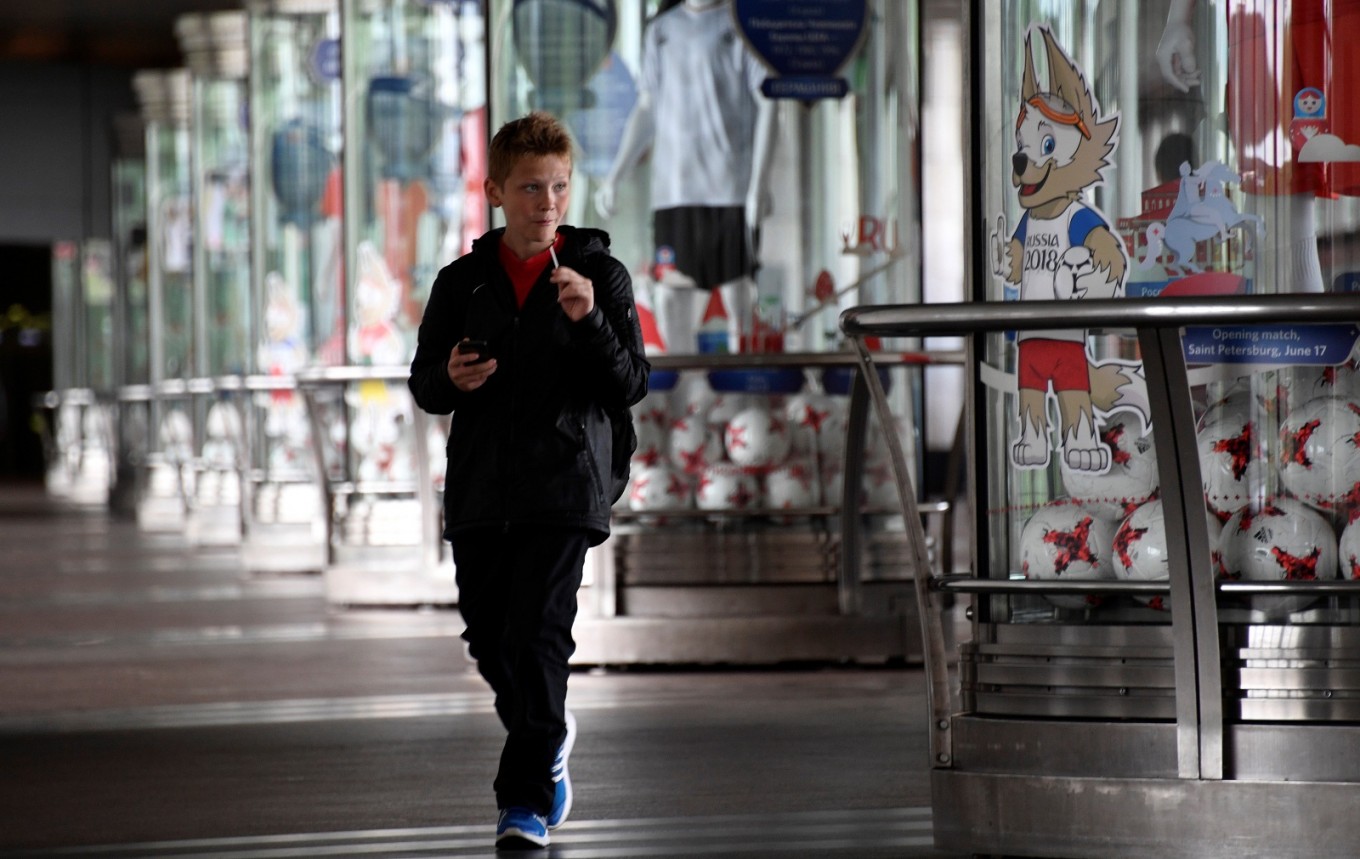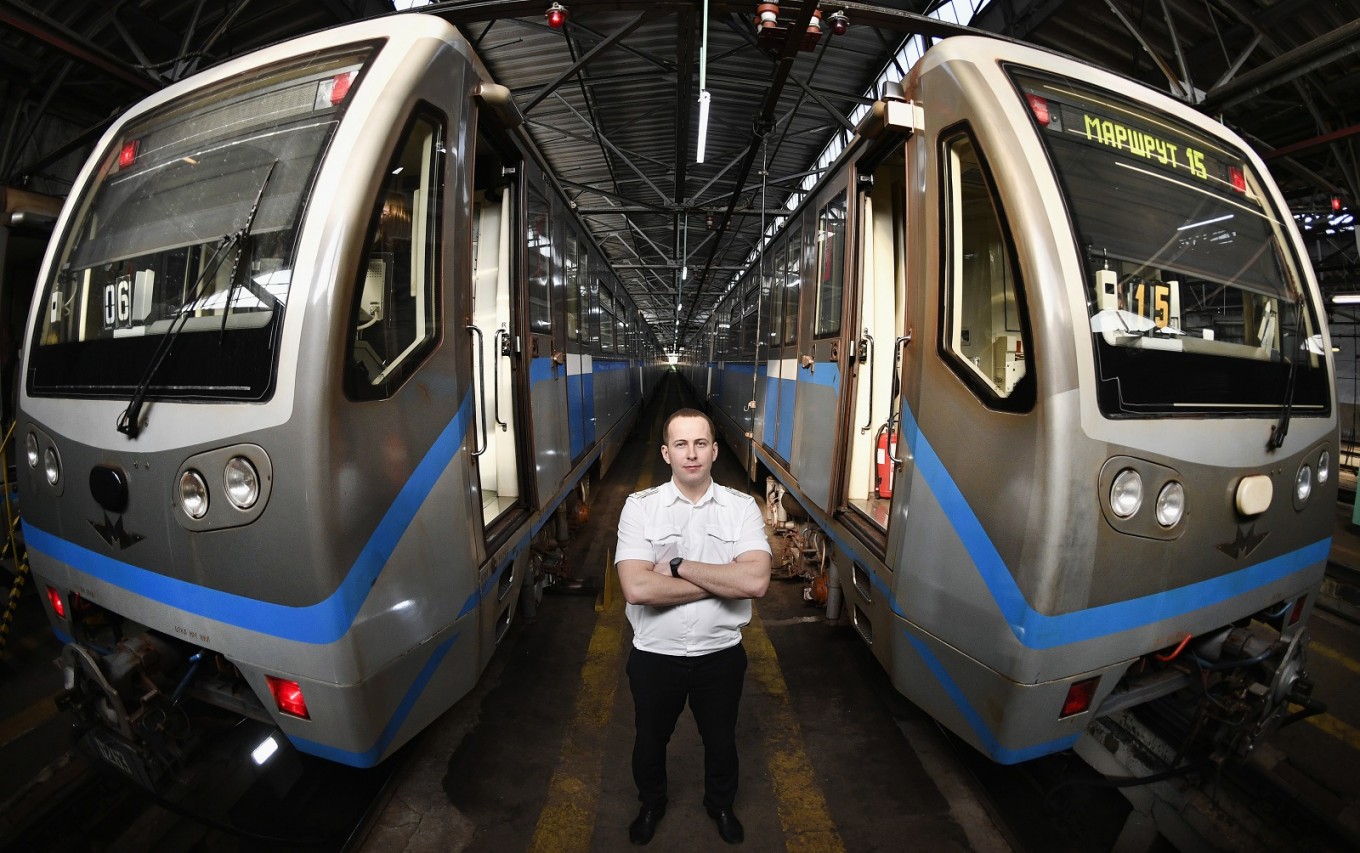Adieu 'grandmothers', Moscow metro modernizes ahead of World Cup
Change Size
 A boy walks by an exhibition devoted to the FIFA Confederations Cup football tournament and Football world Cup 2018 on a platform of a Vorobyovy Hill metro station in Moscow on June 14, 2017. (AFP/Alexander Nemenov)
A boy walks by an exhibition devoted to the FIFA Confederations Cup football tournament and Football world Cup 2018 on a platform of a Vorobyovy Hill metro station in Moscow on June 14, 2017. (AFP/Alexander Nemenov)
O
lder women sitting in cubicles at the bottom of escalators in the Moscow metro and ticking off anyone who breaks the rules were long a symbol of the iconic system, its stations adorned with chandeliers and mosaics.
But the superannuated escalator watchers have fallen victim to a massive modernisation drive of the 82-year-old subway network focused on catering to international fans during the 2018 World Cup.
Nicknamed the "grandmothers of the metro," the women, mostly in their 50s, had been an institution since the system opened in 1935.
The "grandmothers" would issue reprimands through a crackly microphone to anyone who broke escalator rules like sitting on the steps or failing to hold onto the rail, or keeping to the right.
But the "grandmothers" were dismissed in April as the metro system that carries more than nine million passengers each day whizzes into the 21st century with changes including plummy-voiced English announcements, buskers and brand-new trains with wi-fi and mobile phone chargers.
The "grandmothers" have been replaced by "staff better trained on security rules," said metro spokeswoman Anastasia Fyodorova.
For metro riders, it closes a chapter of "Moscow folklore," says philosophy student Alexander Rybkov, who regularly travels on the red line, the system's oldest.
"There are a lot of rules and I myself often got told off. Sometimes they shouted up at me louder than my mum does."
But he adds: "I was really fond of them, I'm going to miss them."
Read also: Why Mexico City authorities install 'penis seat' on metro
Preparing for WC fans

Nevertheless changes to the system are aimed at making it more user-friendly for foreigners and more similar to networks in other metropolises.
Russia is hosting the football World Cup in June next year, anticipating a million foreign visitors, and Moscow's metro is preparing for the influx by advertising for English-speaking ticket staff and making signs and announcements in English.
Other updated moves include being able to pay with credit cards at the ticket windows, and buskers can play in designated spots next to a sign saying that giving money is strictly voluntary.
In moves aimed at locals, specially designed trains promote the state's favourite causes -- saving native tigers and leopards or celebrating Russian cinema with an emphasis on World War II epics.
One train even tells the story of 20th century Russian art, carriage by carriage, to highlight the contemporary branch of the Tretyakov Gallery.
The Moscow metro is already a work of art in itself with station interiors showcasing Soviet "Socialist Realist" style with bronze statues and bright mosaics.
Read also: Paris unveils $1 billion revamp of metro, shopping complex
'Technical feat'

Modernisation has also come to the Moscow metro's crucial escalators as the system is the world's third deepest, behind Kiev and Saint Petersburg's smaller networks.
Stations in the city centre were designed to have dual use as bomb shelters and became a refuge for residents during World War II air raids.
Deepest of all is the escalator at Park Pobedy or Victory Park station, which is 126 metres (413 feet) deep and takes almost five minutes from top to bottom.
One of those keeping the escalators safe is engineer Alexander Kovalyov who works in machine rooms under passengers' feet at Smolenskaya station, making a deafening row that almost drowns out speech.
"You get used to it," he says, pressing a button on a dashboard that seems to have changed little since the station was built in 1952.
"When it's the rushhour, all three escalators work at the same time," he said, together carrying more than 90,000 people per day.
"It's a technical feat."
For some passengers, however, such steep fast-moving escalators are a traumatic experience.
"I've always been scared. I imagine I'll lose my balance and fall," 24-year-old Yekaterina Arkhipova tightly gripping the rail tells AFP, her face blanched.
In fact accidents are rare, with the most serious in 1982 when eight people were killed by an escalator that lost contact with the motor and raced down at great speed.
The accident was hushed up by Soviet authorities.
Read also: Qatar Air becomes World Cup sponsor after Emirates ends deal
'Ensuring safety'
Gradually replacing the older clunkier escalators sometimes requires closing stations for months, and has picked up pace recently.
The aim is to "ensure the safety of passengers and improve the service," ahead of the World Cup, says spokeswoman Fyodorova.
More and more stations are losing their old escalators -- some with brass and wood fittings -- and getting shiny new ones with LED lights running along the sides.
And there is another advantage to the new models -- it's much quieter in the machine rooms under the escalators.
They have "less charm but they are more pleasant," says engineer Kovalyov.









